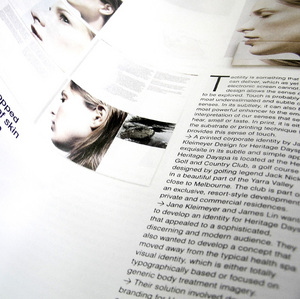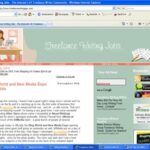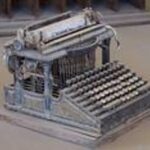One of the most rewarding things for me personally about working with AC has been the opportunity to meet dozens of other writers who are trying to make it freelance. The sheer variety of working styles, communication tactics, and all the little ways that personality creeps into our writing here really sets the articles produced apart. AC isn’t just a place where you can find information on anything and everything (though it is that), it’s a place where you can find information on anything and everything spiced with the flavor of a real personality behind the words.
So I cultivate writing friends the way a gardener cultivates rare breeds of flowers. I cherish and do whatever I can to nourish these friendships, including listening (more or less patiently, depending on the day) to long lines of frustration about the inability to stick to an article idea.
It’s a common thing, really. We have these really brilliant ideas that just gleam and beg profusely to be worded into an article. Muse being a fickle thing, we race to our keyboard and start typing furiously away. Things are going brilliantly, every word practically writing itself … when suddenly nothing makes sense anymore. What was I trying to say? Where was I going with this? Oh mannn now I’ve lost the gleaming brilliance of the original idea completely and I can’t even remember what had me so excited to write this in the first place!
Relax. Take a deep breath. And get back to basics.
Benefits of the Outline
Most of us started learning the basics of outlines in grade school. In junior high they were given a little bit more importance, and in high school they were a common thing. During college, the outline became chapters.
As out-of-school adults, most writers avoid the outline like some kind of cliche. So before you roll your eyes thinking, “No – I will not be doing this!” ask yourself a quick question: Which more torturous, the outline or the loss of a brilliant idea?
Being prepared makes any job easier and being organized allows for daily interruptions that happen to all of us that write from home (read: “No, mommy really has to work right now. No, she’s not playing computer games – this time. I promise your belly-button won’t rub a blister on your backbone if you have to wait another five minutes for me to finish this paragraph.”)
Think of the outline as a blueprint. No matter where you have to stop, you can always jump right back in without losing your train of thought – just check the blueprint and you’re back on track. It guides you in each step of your article and holds shiny little tidbits of fascinating thoughts you just know will make your article creative and appealing.
The Outline Template
One of the most unfortunately uncelebrated things about the outline is that you can create a standard template to use over and over. In fact, it’s really useful to do so – make the template once, and you only have to plug in answers from there on out. You’ll be ready to breeze through writing your article.
Just like in school, we need to analyze the parts of a good, complete article. Quite simply, they break down to three parts:
Introduction – Where you literally introduce the topic of your article, usually providing some kind of sneak-peek into what the article will cover. You’ll want to do this pretty quickly – 3 paragraphs at most – and entice your reader to keep reading.
Content – This is the meat of your article, where you go in-depth into your topic and answer questions, provide steps, etc. How long does the content need to be? As long as it takes to completely cover your topic, no more or less. Keep in mind, when writing for the Internet, that your paragraphs need to be short and easy to read. Keep them to a few sentences and leave out confusing jargon – or at least explain it, if you must use it.
Conclusion – The conclusion is your deep breath at the end. It’s your summary, where you want to motivate the reader to use the information you’ve presented or to simply digest it to mull over for a while. You want the conclusion to be very brief, as well. Two to three paragraphs should more than do it.
So to plug these pieces into a template. First, open up the text editor you use most for your article writing. You’ll want to save the outline in the format that editor uses just to make life easy. Then, formatting it however you like, create an outline that’s something like this (without my humorous attempt at example text, of course):
Working Title: My Brilliant Article
Topic: Self-indulgence
Audience: Me
Introduction Notes: The first sentence of the article, some way of attracting the interest of my reader would be a great start.
Content Notes: Transition sentence between the introduction and content.
Sub-Title 1: Sub-topic that describes how-to, explains one facet of my topic, etc.
Sub-Title 2: More of the above.
Conclusion Notes: How am I going to wrap this baby up?
For a very in-depth article outline template, check here.
When you finish your outline template, take a break. You’d have to be a saint to have the patience it takes to move from this technical frame of mind to a creative one. After that, it’s time to get creative and add flesh to the meat you’ve jotted down. Write out your first outline and use it to create a draft.
Always refer back to your outline. When you start going through your first draft to make edits, make sure that every sentence propels the article toward the conclusion you intended. If you catch yourself trying to sway from that conclusion, take it as a sign that there may be another article in the works – and celebrate your brilliance in discovering it!
The time you spend in outlining your article will never be a wasted effort. Save your outlines – they will serve as a guide in writing articles, a valuable tool that will constantly keep you on track.
Reference:
- Three Successful Outlines – www.btinternet.com/~coillebheag/writing/outlines.htm








